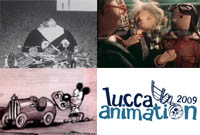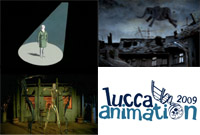Czech experience in animation films is unanimously regarded as one of the most important and prolific ever in the historical and international scenes.
Former Czechoslovakia has given birth to an animated puppet school which collected honours and imitators all over the world; nevertheless, relying on an extreme visual variety, social criticism and surrealistic sensibility, Czech authors demonstrated great talent also in all of the other techniques.
It is in Prague, amidst unstoppable creative turmoil (dating back to those early times and still continuing), that artistic matters and minds of the finest breed come to light. As the Iron Curtain crumbled, Czech Republic's capital became the Eastern Europe cultural outpost facing Western world, regaining its ancient role of crossroads of arts, ideas and innovation. Prague attracts continuously growing tourist flows and, despite its being such an ‘old' town, rich in deep historical significance, it is particularly appealing for young people from all over the world; it really is the beating heart of the new Europe.
Here below, the schematic summary of the exhibition programmes:
 | The Masters from Prague: Yesterday, ten masterworks from the past, produced in the years from 1948 to 1991 by artists like Zdeněk Miler (The Millionaire Who Stole the Sun) and Břetislav Pojar (A Drop Too Much). In this panoramic review, Pavel Koutský (Long Live the Mouse) will represent the ‘trait d'union' between the past and the new generation. |
| | |

| The Masters from Prague: Today, the pick of the crop from the young animators in contemporary Prague; the advent of digital animation and video clip filming. In this realm it's worth to remember Le carnaval des animaux by Michaela Pavlátová; The Glassworks by Aurel Klimt and One Night in One City by Jan Balej. |
| | |
| | |
 | Jan Švankmajer, the masterworks of a surrealist artist, objects sculptor and animator. Švankmajer had an extremely strong influence on contemporary as well as future animators and directors. Amongst the titles in the exhibition: The Flat (1968), Darkness-Light-Darkness (1989), The Death of Stalinism in Boemia (1990) and Food (1992). |
| | |
 | Jiří Barta, one of the pillars of Czech animation, Barta explored the most surrealistic aspects of stop motion. The review dedicated to him features his incisive middle-length film, The Pied Piper of Hamelin (1985), from the homonymous legend, together with some of his most famous short films like The Vanished World of Gloves (1982) and The Club of the Laid Off (1989) |









